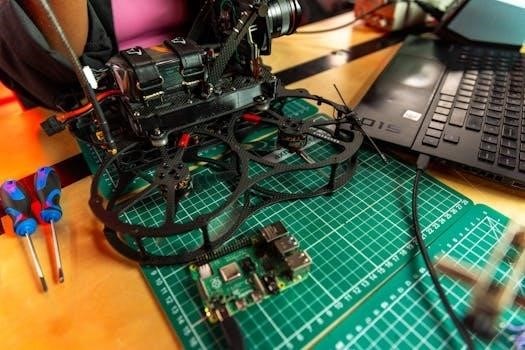DieHard battery chargers are essential tools for maintaining automotive battery health. These chargers offer various features, including multiple charging modes and safety mechanisms. They are designed for both standard and specialized battery types, ensuring versatility.
Overview of DieHard Battery Charger Models
DieHard offers a range of battery charger models, catering to different needs. Some models, like the 10/2 Amp Automatic Engine Start charger, provide both charging and engine starting capabilities. Other models focus on specific battery types, such as those found in lawnmowers or motorcycles, offering a 2-amp trickle charge setting. DieHard chargers come in various configurations including models with robust metal cases and top-mounted handles for durability and portability. Certain models may include features like a battery tester and air compressor, expanding their functionality beyond simple charging. Some chargers also offer multiple charging stages, ensuring a thorough and safe charge. With varying amperage options available, users can select the charger best suited for their battery size and charging requirements. Additionally, some models are designed with automatic features, streamlining the charging process for ease of use. The product line is designed to be practical and efficient, making them a reliable choice for automotive battery maintenance.
Understanding Charger Settings
DieHard chargers feature crucial settings for optimal battery care. Understanding the 12V/24V switch and modes like Auto, Manual, and Maintainer is essential for safe and effective battery charging.
12V/24V Switch Explained
The 12V/24V switch on your DieHard battery charger is a critical setting that determines the voltage output of the charger, specifically to match the voltage of the battery you’re intending to charge. Most vehicles use 12-volt batteries, so the 12V setting is the most frequently used. However, some heavy-duty vehicles and equipment may utilize 24-volt systems, necessitating the use of the 24V setting. Selecting the wrong voltage can damage both the charger and the battery, so always double-check your battery’s voltage rating before proceeding. Using the 12V setting on a 24V battery will not charge it, and using the 24V setting on a 12V battery can lead to overcharging and potentially dangerous situations. Therefore, it is essential to match the charger output to the battery voltage for safe and effective charging. Refer to your vehicle or battery manual if unsure about the battery voltage requirements. This switch is a safety feature to prevent improper charging.
Auto, Manual, Maintainer Modes
DieHard battery chargers typically offer three distinct charging modes⁚ Auto, Manual, and Maintainer. The Auto mode is designed for user convenience, automatically adjusting the charging rate based on the battery’s needs, and is suitable for most routine charging tasks. It monitors the battery’s state of charge and tapers off the current as it reaches full capacity. Manual mode provides more user control, allowing you to set the charging rate. This mode is useful for specific charging situations where you want to apply a certain charge rate. However, it requires monitoring to prevent overcharging. Lastly, the Maintainer mode is designed for long-term battery care. It keeps the battery at full charge without overcharging, which is ideal for batteries that are not used frequently. This mode uses a very low charge rate to compensate for natural discharge. Selecting the correct mode is crucial for effective and safe battery charging.

Safety Precautions
Safety is paramount when using a DieHard battery charger. Always wear eye and body protection. Inspect cords and plugs for damage. Never operate with damaged components to prevent potential hazards.
Importance of Eye and Body Protection
When working with a DieHard battery charger, prioritizing eye and body protection is crucial due to the inherent risks involved. Battery acid, a corrosive substance, can cause severe burns and eye damage if it comes into contact with skin or eyes. During the charging process, batteries can emit potentially harmful gases. Wearing safety goggles is essential to shield your eyes from splashes and fumes. Similarly, protective clothing, such as gloves and long sleeves, can prevent skin irritation or chemical burns. The charging process may sometimes involve sparks, which can cause burns or ignite flammable materials. Ensuring your skin is covered and protected minimizes exposure to these potential hazards. Always take precautions to avoid touching your eyes while working near the battery. By adhering to these guidelines, you create a safer environment and mitigate the chances of injury. The use of appropriate safety gear significantly reduces the risk of accidents. Protecting yourself is a key step in ensuring safe battery maintenance.
Handling Damaged Cords and Plugs
Handling damaged cords and plugs on your DieHard battery charger requires utmost caution to avoid potential electrical hazards. A damaged cord or plug can expose live wires, creating a risk of electric shock and fire. Never attempt to use a charger with frayed wires, exposed conductors, or a cracked plug. Immediately discontinue use and unplug the device from the power source. Do not try to repair a damaged cord or plug yourself unless you are a qualified technician. Improper repairs can further compromise safety and increase the risk of accidents. A damaged cord or plug should be replaced promptly by a qualified service person. Using a charger with damaged components can lead to short circuits and damage to the charger or the battery. Inspect cords and plugs regularly for any signs of wear and tear. Addressing these issues immediately is crucial for safe operation. Neglecting to do so poses a significant risk, therefore replacing damaged components is necessary.

Charging Process
The charging process involves careful steps to ensure battery safety and effective charging. It’s important to prepare the battery before connecting the charger. Following instructions is key for proper operation and battery longevity.
Preparing the Battery for Charging
Before initiating the charging process with your DieHard battery charger, several crucial steps must be taken to ensure safety and optimal results. Begin by disconnecting the battery from the vehicle to prevent any electrical shorts or damage during charging. Inspect the battery terminals for any corrosion or dirt; clean them with a wire brush and a solution of baking soda and water if necessary. Ensure the battery is placed in a well-ventilated area, away from any flammable materials, as batteries can emit gases during charging. Check the battery’s electrolyte level and add distilled water if needed, but avoid overfilling. Verify that the battery voltage matches the charger’s settings, typically 12V or 24V. Make sure your charger’s power pack is securely connected. These preparatory steps are vital for a safe and efficient charging process;
Step-by-Step Charging Instructions
Once the battery is prepared, connect the DieHard charger’s positive (red) clamp to the positive terminal of the battery and the negative (black) clamp to the negative terminal, ensuring a secure connection. Double-check that the charger’s voltage setting (12V or 24V) matches your battery. Select the desired charging mode⁚ “Auto” for automatic charging, “Manual” for controlled charging, or “Maintainer” for long-term storage. Plug the charger into a suitable power outlet. If using the manual mode, monitor the charging process and refer to your owner’s manual for specific charging times and current settings. Avoid overcharging the battery, as this can damage it. After charging, disconnect the charger from the power source first, then remove the clamps from the battery terminals. Check the battery’s voltage for a full charge reading.

Troubleshooting
When facing issues with your DieHard charger, consult the manual for specific troubleshooting steps. Common problems include the charger not powering on or the battery failing to charge correctly. Proper diagnosis is essential.
Common Issues and Solutions
Encountering problems with your DieHard battery charger can be frustrating, but most issues have straightforward solutions. One common problem is the charger not turning on, which could stem from a faulty power cord or a blown fuse. Always check the power cord for damage and ensure it is properly plugged into a working outlet. If the charger still doesn’t power on, inspect the fuse and replace it if necessary. Another frequent issue is the charger failing to recognize the battery, often due to poor connections. Clean the battery terminals and charger clamps thoroughly to eliminate any corrosion. Sometimes, the battery may be too deeply discharged for the charger to automatically recognize it. In such cases, a manual charging mode might be necessary, if your charger has such option. If the charger appears to be working but the battery is not charging, the battery itself may be faulty or beyond its recharge limit, requiring replacement. Ensure you are using the appropriate charge setting for your battery type. Always refer to the charger’s manual for specific troubleshooting steps related to your model. Lastly, always check for error codes indicated on the charger’s display as they often provide specific clues about the issue.
Battery Not Charging Properly
If your DieHard battery charger isn’t effectively charging your battery, several factors could be at play. Firstly, ensure the charger is set to the correct voltage (12V or 24V) for your battery. An incorrect voltage setting will prevent proper charging. Check the connection points between the charger clamps and the battery terminals; they should be clean and secure. Loose or corroded connections can impede the charging process. If the charger has multiple charging modes (Auto, Manual, Maintainer), verify you’ve selected the appropriate one for your needs. In some cases, deeply discharged batteries might not respond well to automatic modes and require a manual charge. A battery with internal damage or nearing the end of its life may also fail to charge fully, even with a functional charger. If the charger itself has issues, it might not be delivering the correct current. Some chargers have built-in diagnostic systems that can indicate faults. If error lights appear, consult your manual for guidance. Before attempting a charge, always ensure the battery itself is in good condition and suitable for recharging. If the problem persists, it may be necessary to test the battery separately.

Maintenance and Care
Proper storage is crucial for extending the life of your DieHard charger. Keep it in a dry place. Regularly inspect the cords and clamps for damage. Check functionality before each use.
Proper Storage of the Charger
To ensure the longevity and optimal performance of your DieHard battery charger, proper storage is paramount. Always store the charger in a dry, indoor environment, away from moisture and extreme temperatures, as these conditions can cause corrosion and damage to the internal components. Avoid storing the charger in areas where it might be exposed to direct sunlight or excessive heat, which can degrade the casing and electronic parts. It’s also crucial to keep the charger away from flammable materials and corrosive substances. When not in use, wind the power cord loosely and securely, preventing any kinks or strain on the wiring. Ensure that the clamps and connectors are clean and free from any debris before storing; Place the charger in a designated storage space where it won’t be bumped or have heavy objects placed on top of it. By adhering to these storage guidelines, you can greatly extend the life of your DieHard battery charger and ensure it remains in good working condition for years to come. Proper care will help avoid any unexpected issues when it’s needed most.
Checking for Charger Functionality
Regularly checking the functionality of your DieHard battery charger is vital for ensuring it operates correctly and safely. Before each use, visually inspect the charger for any signs of damage, such as cracks in the casing, frayed cords, or loose connections. Make sure the clamps are clean and free from corrosion, as this can affect their ability to make a proper connection. Plug the charger into a working power outlet and verify that the power indicator light illuminates, confirming that the charger is receiving power. If the charger has a built-in tester, use it to check the voltage reading; compare it to the expected level for your battery type. Test the different charging modes, such as Auto, Manual, and Maintainer, to confirm that the charger switches correctly. If the charger has an engine start function, test that as well to verify it is in good working order. If any of these tests reveal a problem, do not use the charger until it has been professionally repaired. Consistent checks will help in avoiding potential damage to your battery.